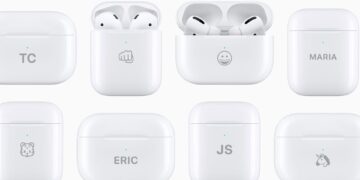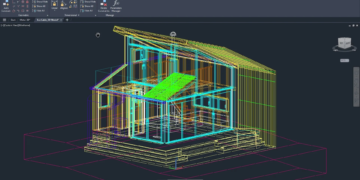Remote Patient Monitoring (RPM) has now become a critical part of healthcare delivery as it allows service providers to monitor the vital health indicators of patients remotely. You may be a clinic, a hospital system, or even a specialty care provider, but the implementation of RPM can enhance outcomes, reduce readmissions, and aid value-based care. However, to get the best of RPM, it is important first to settle on the right vendor, yet it is easier said than done. Among numerous technology platforms that offer full-scale RPM solutions, it is hard to find a platform that meets your clinical, operational, and financial needs without a visionary approach.
Understand Your RPM Goals and Needs
Nevertheless, clarity for the reasons why you are implementing RPM is essential before assessing vendors. Do you concern yourself with chronic problems such as hypertension and diabetes? Are you targeting post-discharge monitoring to reduce readmissions? Or would you like to enhance the participation of patients in wellness programs?
Different goals require different data sets and workflows. As an example, chronic care management may require an extended history of vitals monitoring and full integration with EHR machines, whereas post-acute RPM may need real-time alerts and escalation plans. Your clinical interests will eliminate the vendors that do not provide devices of interest, parameters presented to be monitored, and functions of the software that the user performs.
Evaluate Device Range and Usability
The RPM cannot be any better than the devices that your patients are working with. Seek vendors that have FDA-cleared devices, clinically proven devices, devices easy to navigate by the patient, particularly the seniors, or less tech-savvy patients. When the devices are either too complex or inaccurate, compliance levels will decline, and results will no longer be good.
The vendor should also be investigated to find out whether it provides 4 G-enabled or cellular-connected devices. These are essential in providing support to the populations that lack Wi-Fi and smartphones. Solution-based on Bluetooth may be less expensive, but they may need a technical setup, which may be a problem for the patient. Cellular devices can be used with just a plug-and-play, enabling momentary friction and compliance.
Assess Integration with Your Clinical Systems
Unless an RPM platform comes integrated with your EHR or care management software, your clinical staff will be spending more time on administrative activities and less on care provisions. Inquire with the potential vendors on whether they use HL7 or FHIR standards, does their system directly sends the data to your current EH, R, or does it needs a dashboard.
You also need to find out whether your clinical team can establish thresholds, get alerts, and record follow-up activities on the same platform. The easier RPM incorporates into the working cycle of your team, the higher the chances it has to be adopted and used successfully.
Understand the Vendor’s Clinical Support Model
Certain RPM providers offer clinical monitoring solutions: their licensed nurses look at incoming information, triage alerts, and escalate them. Others have a software-only model where all the patient contacts are left to your internal personnel. The two models are advantageous as well as disadvantageous depending on your capacity of the main staff as well as the budget.
In case your clinic does not have the bandwidth to manage RPM escalations systematically on-site, a vendor who provides 24/7 clinical monitoring would be a suitable solution. However, be warned, contracting clinical touchpoints would imply that you would need to check the credentials, training process, and interaction recording process of their team. On the other hand, when you want to have patient engagement kept in-house, you are going to require a vendor that will provide your operators with an easy backend to keep track of patients and engage with them in real time.
Look into Reimbursement Support and Billing Experience
RPM is a reimbursable service on Medicare and numerous individual payers, and coding, billing, and adherence need assortment. An excellent vendor ought to provide advice on the CPT codes such as 99453, 99454, 99457, and 99458. Ideally, they will even be useful in measuring the time spent on monitoring patients and raising awareness in case some billing numbers are reached.
Other vendors may offer billing facilities or revenue cycle services so that they can maximize reimbursement. Whether your clinic is new to RPM or has used it before but has not experienced much reimbursement success, feel free to select a vendor with a perfect track record of success and clear reporting capabilities to ensure the decreased administrative burden and enhanced ROI.
Measure Scalability and Customization Options
It is also possible that today you only need RPM to cover 50 patients, but should the system work well, it could be very easy to expand it to 10s or even 100s of patients. The technical infrastructure and the team size of your selected vendor must be able to scale along with you without undermining reliability or quality of service.
Determine whether the vendor has customization services, such as a branded patient portal and different patient populations’ templating care pathways. In case the platform is inflexible or the requirements of minor changes and additions consume months of time, there will come a point when you will simply outgrow it. Flexibility is a sign of a mature, forward-looking solution.
Investigate Data Security and Regulatory Compliance
RPM platforms handle sensitive PHI (Protected Health Information), and in this situation, security is not an option but a necessity. Check that the vendor is entirely HIPAA compliant, can report on security audits, and stores data in a safe way.
Question them on the encryption, breach response policies, and do they keep information on-shore (which is especially important to comply with the local regulations). Also, the vendor needs to provide Business Associate Agreements (BAAs) and be open about the entities having access to patient data.
Conclusion
Selecting a suitable RPM vendor does not only mean selecting a technology platform; it is a decision regarding a clinical partner. What you require is a vendor that will not only meet your short-term requirements but also grow with you, serve your employees, involve your patients, and make you profitable. The incorrect decision wastes devices and good rates and is nightmarish to be reimbursed. But the right one transforms care delivery.
Be patient, keep your eyes open, and ensure that the demonstrations of the salespeople do not show problems. Smart selection is the key factor when using the RPM in a costly experiment or a scalable care model.













